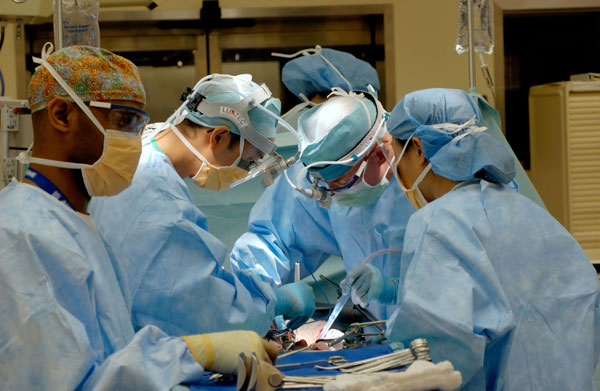The first ever successful Xenotransplantation opens new opportunities to organ transplant

[Doctors performing surgery. Photo credit to Unsplash]
The first-ever successful animal-to-human organ transplant, known as xenotransplantation, marks a significant turning point in the history of medical science, and opens doors to a whole new era of possibilities.
On March 16th, 2024, Richard Slayman became the first person to successfully undergo a kidney transplant from a genetically modified pig.
Mr. Slayman, a 62-year-old battling kidney failure, underwent a four-hour operation to receive the pig kidney.
The procedure was the latest development in creating genetically modified pigs to transplant kidneys, livers, hearts, and other vital organs to humans in dire need of transplants.
Although Mr. Slayman has been discharged from medical care, doctors are still unsure of the long-term viability of xenotransplantation and the potential for his body to accept the transplanted organ.
The potential medical capability of xenotransplantation is so tremendous that with further practice and assurance of success, it could offer life-saving treatments to over 550,000 Americans with detrimental kidney failure.
However, the efficacy and durability of these transplantations remain uncertain, in part because the lifespan of a pig is ⅓ of a human lifespan.
Therefore,a pig organ may age and deteriorate faster compared to its human equivalent.
There are risks in organ transplantations such as organ rejection, which is when the human immune system attacks the transplanted organ and any foreign tissues.
Pig heart transplantation was attempted twice on January 7, 2022, and September 20, 2023, but both failed as the two recipients died just a few months after surgery.
Slayman has also experienced signs of organ rejection, necessitating the use of drugs that suppress the immune system to forcibly stop rejection.
Since the early 2000s, several biotech companies in the U.S. and China have been competing to develop a supply of cloned and genetically modified pigs so their organs may be accepted by the human body when transplanting.
Xenotransplantation patients have shown a tremendous increase in longevity, going from 90 minutes in 1964 to 60 days in 2022, and potentially lasting years in the future.
Moreover, xenotransplantation sheds light on the potential monetary cost versus medical necessity.
Because xenotransplantation is currently rare and difficult, it is extremely expensive, costing around $600,000, which is about five times more expensive than a human heart transplant.
The expense of xenotransplantation raises ethical concerns about distributive justice and whether xenotransplantation is a medical necessity or will be used as a tool to attain money.
If xenotransplantation does become more common, disregarding the cost, organ transplant waiting lists are not ordered by the order of necessity, but by wealth and luck.
Patients who can afford to join multiple listings on different waiting lists are prioritized despite their less urgent medical emergency, potentially killing patients of higher medical necessity who have been waiting for a longer time.
Dr. Raymond Givens and his colleagues at Columbia University have investigated organ transplant data between 2000 to 2013 and found out that patients could pay to be on the organ transplant waiting list across different regions, increasing the chance of receiving a transplant based only on financial privilege.
For instance, heart transplant patients on multiple waiting lists had an average income of about $90,000, while those with only one listing had an average income of around $68,000, signifying the problem of income disparities.
Moreover, racial disparities also exist as minorities are more likely to have kidney and heart failure than White Americans, but are much less likely to receive transplants.
African Americans, Hispanic Americans, and Native Americans experience the highest rates of end-stage kidney disease, but typically have poorer outcomes and face greater challenges in accessing transplant services.
Despite these ethical and logistical hurdles, the successful transplantation of Mr. Slayman’s kidney offers a glimmer of hope, and signals the potential feasibility of integrating xenotransplantation into mainstream medical practice.
The discharge of Mr. Slayman from the hospital serves as a testament to both the triumphs and tribulations inherent in this groundbreaking frontier of medicine.

- Matthew Park / Grade 9
- Seoul International School

![THE HERALD STUDENT REPORTERS [US]](/assets/images/logo_student_us.png)
![THE HERALD STUDENT REPORTERS [Canada]](/assets/images/logo_student_ca.png)
